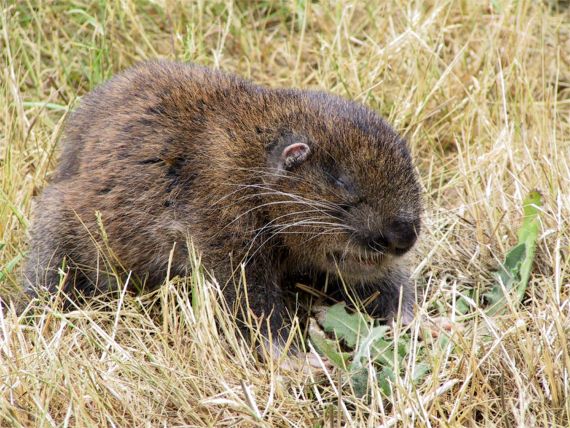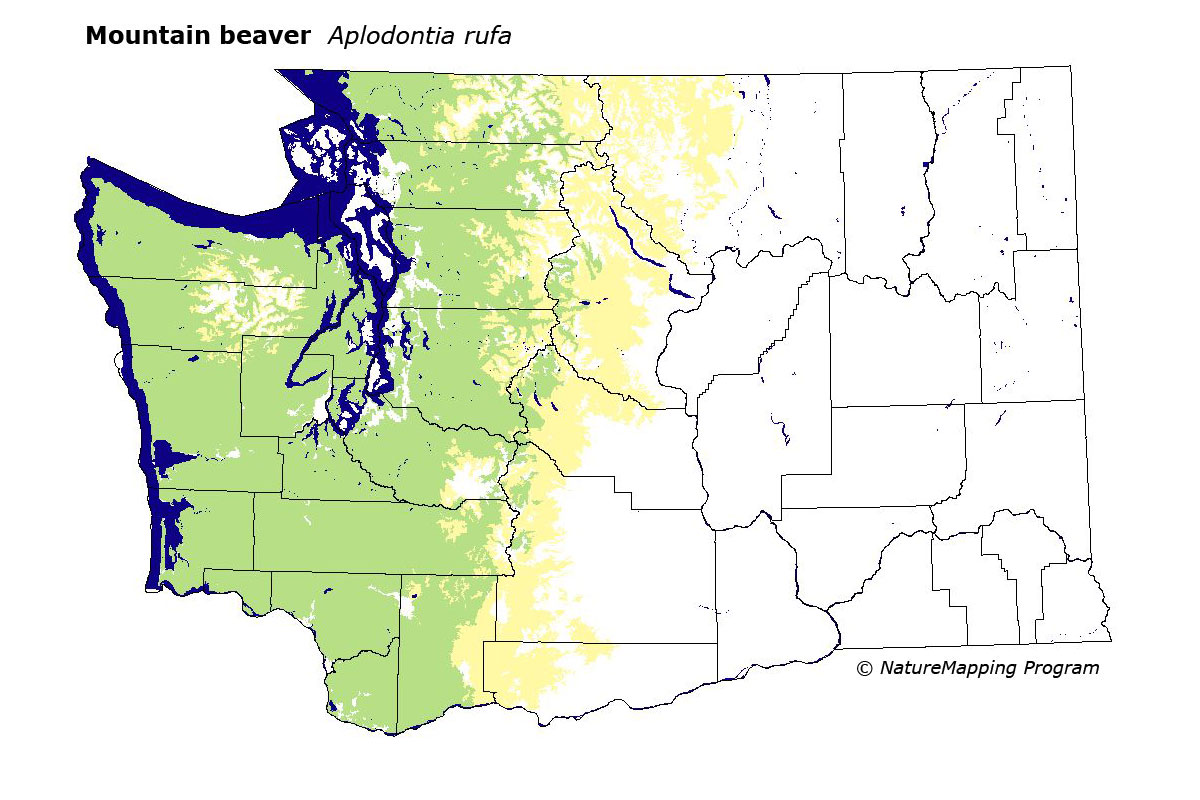
Food and Feeding Habits
- Mountain beavers are herbivores and eat a wide variety of plants.
- Food items include all above and below-ground parts of ferns, salal, nettles, fireweed, bleeding heart, salmonberry, brambles, dogwoods,
vine maples, willows, alders, and conifers. Mountain beavers also eat rhododendrons and other ornamental perennials, shrubs, and trees.- Food items are eaten on site, temporarily stored outside burrow entrances, or placed in caches inside burrow systems (Fig. 4).
- Mountain beavers will climb into trees to lop off living branches that are up to 1 inch in diameter.
- Mountain beavers have primitive, inefficient kidneys and must drink 1/3 of their body weight in water every day.
Reproduction
- Mountain beavers are solitary except during the breeding season.
- Breeding takes place from February to April.
- Two to four young are born after a 28- to 30-day gestation period.
Mortality
- Mountain beavers are eaten by bobcats, coyotes, large owls, and occasionally cougars and bears. Weasels and mink (primarily large males) eat young mountain beavers.
- Large numbers of mountain beavers are often trapped to prevent damage to newly seeded or planted commercial forests.
Mountain beavers are not considered a significant source of any infectious disease that can be transmitted to humans or domestic animals. Anyone handling a living or dead mountain beaver should wear rubber gloves, and wash his or her hands well when finished. Although the largest flea (Hystrichopsylla schefferi) in the world—it is up to ¼ inch long—is found on mountain beavers and in their burrows, it does not bother humans.
Mountain Beaver Breeding Range
